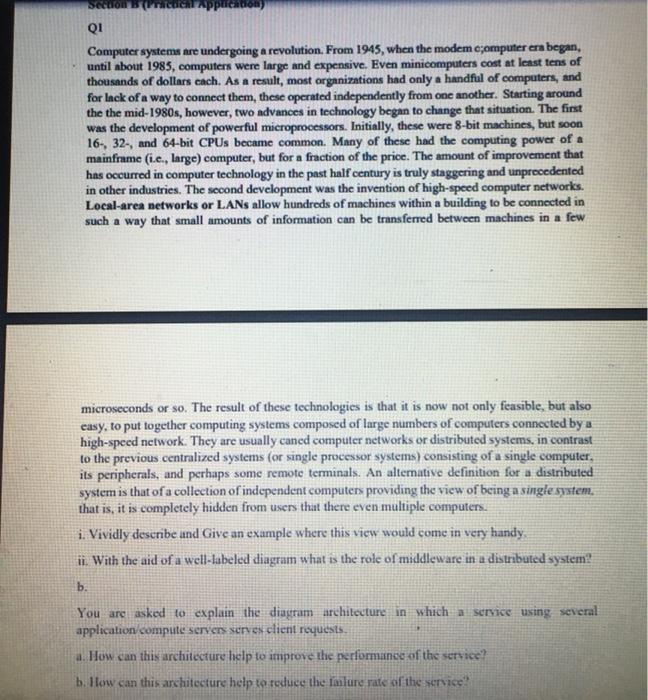Se ti riccappucation) QI Computer systems are undergoing a revolution. From 1945, when the modem computer en began, until about 1985, computers were large and expensive. Even minicomputers cost at least tens of thousands of dollars cach. As a result, most organizations had only a handful of computers, and for lack of a way to connect them, these operated independently from one another. Starting around the the mid-1980s, however, two advances in technology began to change that situation. The first was the development of powerful microprocessors. Initially, these were 8-bit machines, but soon 16- 32-, and 64-bit CPUs became common. Many of these had the computing power of a mainframe (i.c., large) computer, but for a fraction of the price. The amount of improvement that has occurred in computer technology in the past half century is truly staggering and unprecedented in other industries. The second development was the invention of high-speed computer networks. Local-area networks or LANs allow hundreds of machines within a building to be connected in such a way that small amounts of information can be transferred between machines in a few microseconds or so. The result of these technologies is that it is now not only fieasible, but also easy, to put together computing systems composed of large numbers of computers connected by a high-speed network. They are usually caned computer networks or distributed systems, in contrast to the previous centralized systems (or single processor systems) consisting of a single computer, ils peripherals, and perhaps some remote terminals. An alternative definition for a distributed system is that of a collection of independent computers providing the view of being a single system. that is, it is completely hidden from users that there even multiple computers. i. Vividly describe and Give an example where this view would come in very handy ii. With the aid of a well-labeled diagram what is the role of middleware in a distributed system? b. You are asked to explain the diagram architecture in which a service using several application compute servers seves client requests. a. How can this architecture help to improve the performance of the service! b. How can this architecture help to reduce the laure rate of the service







